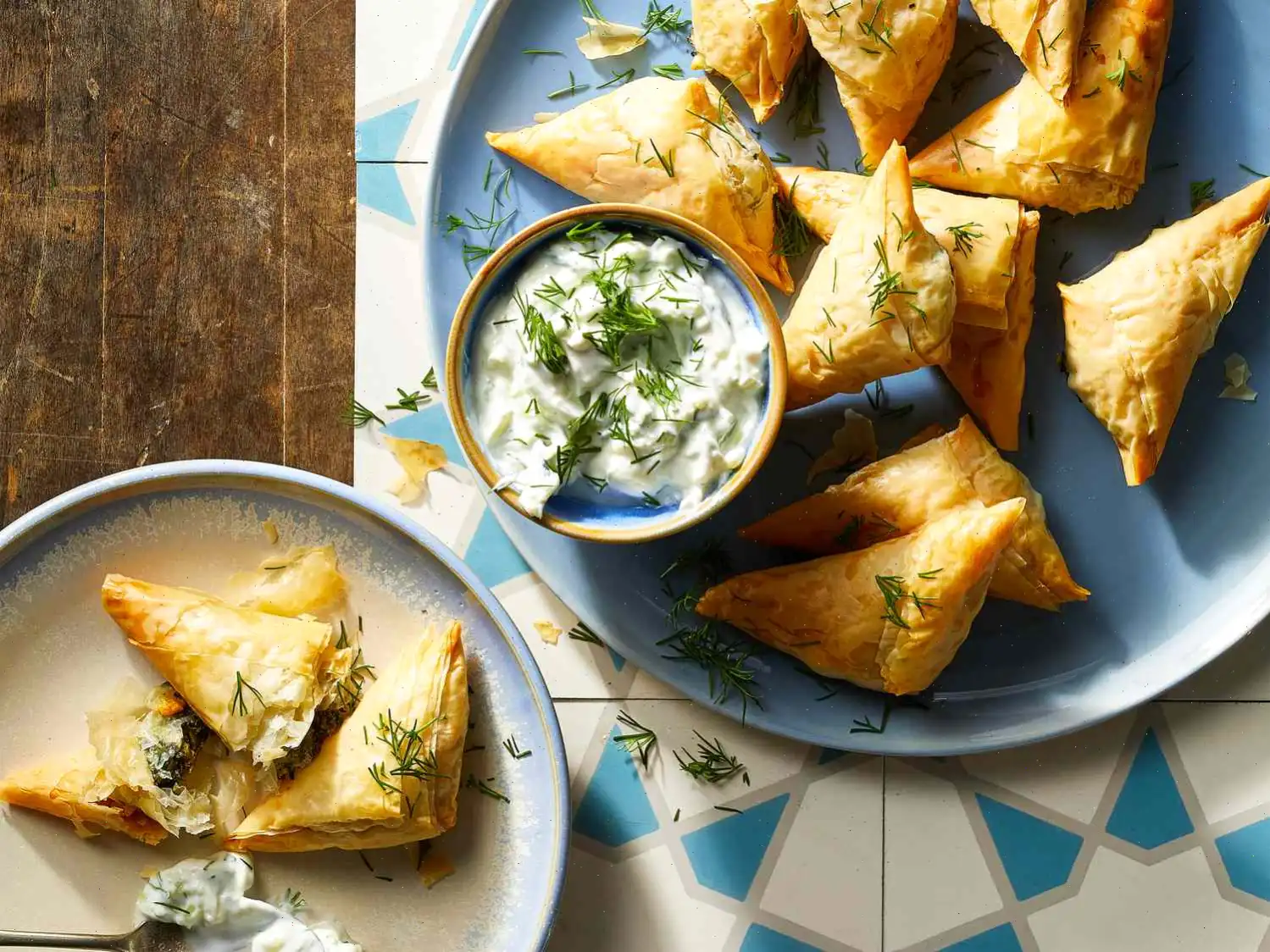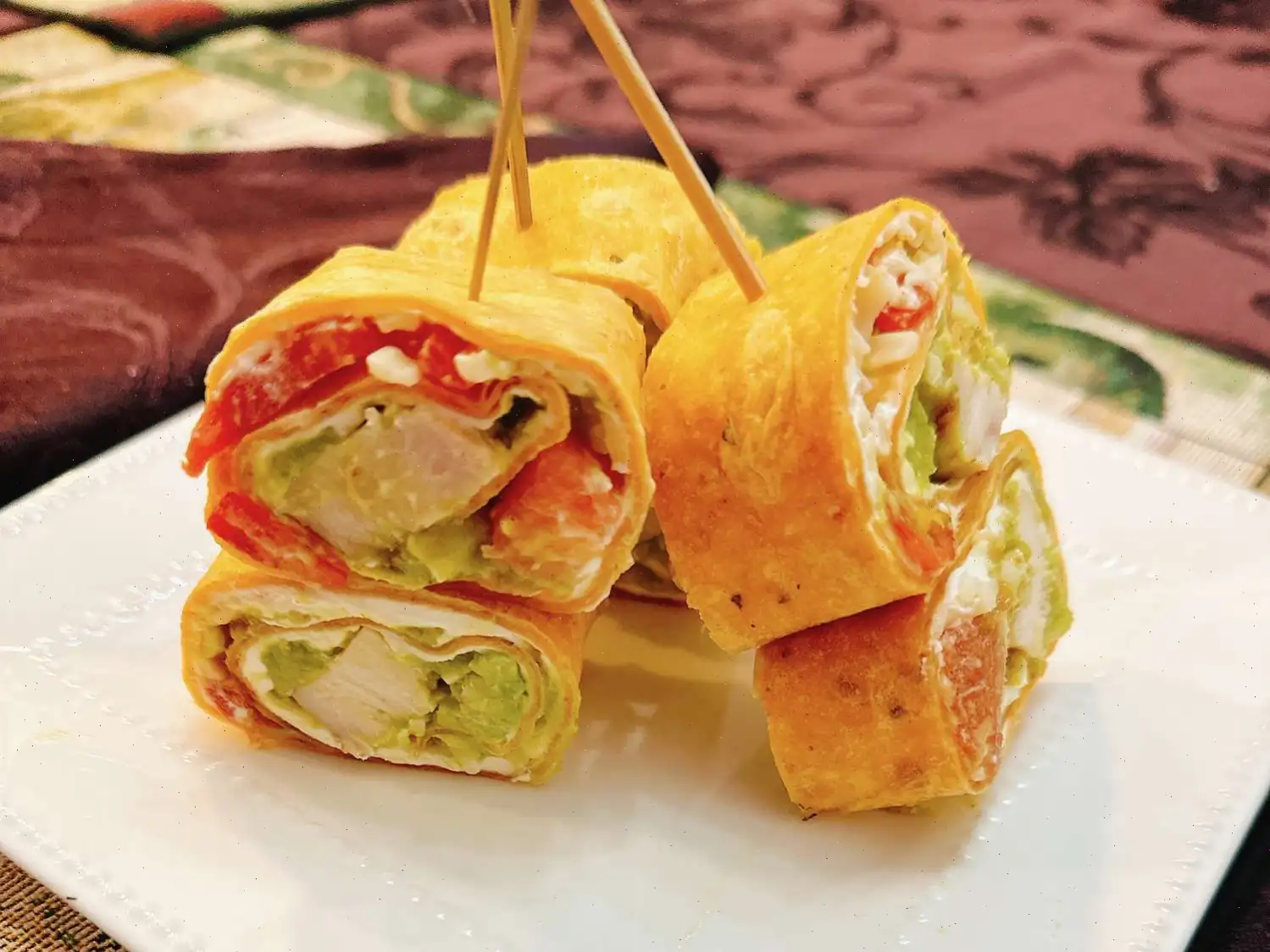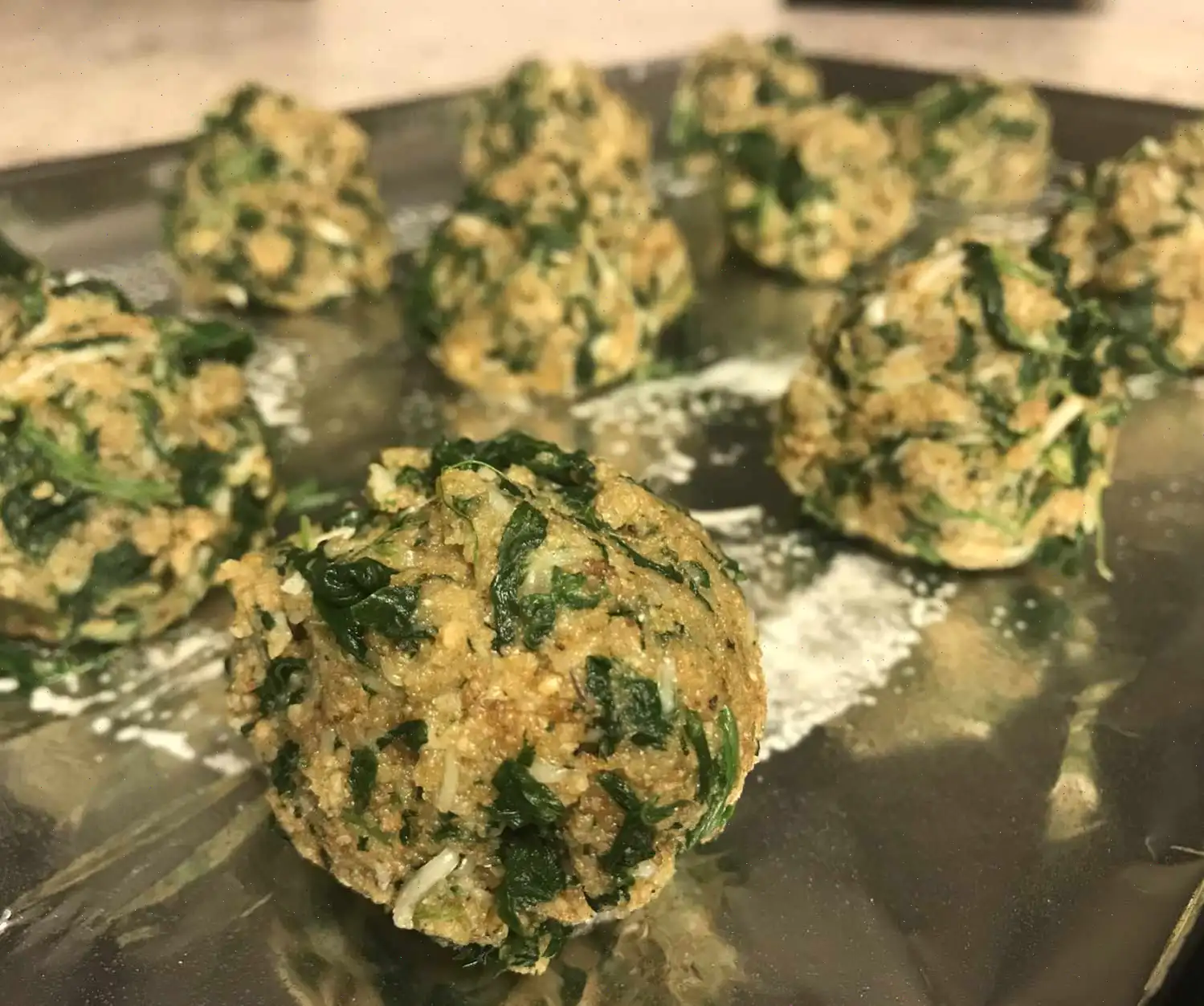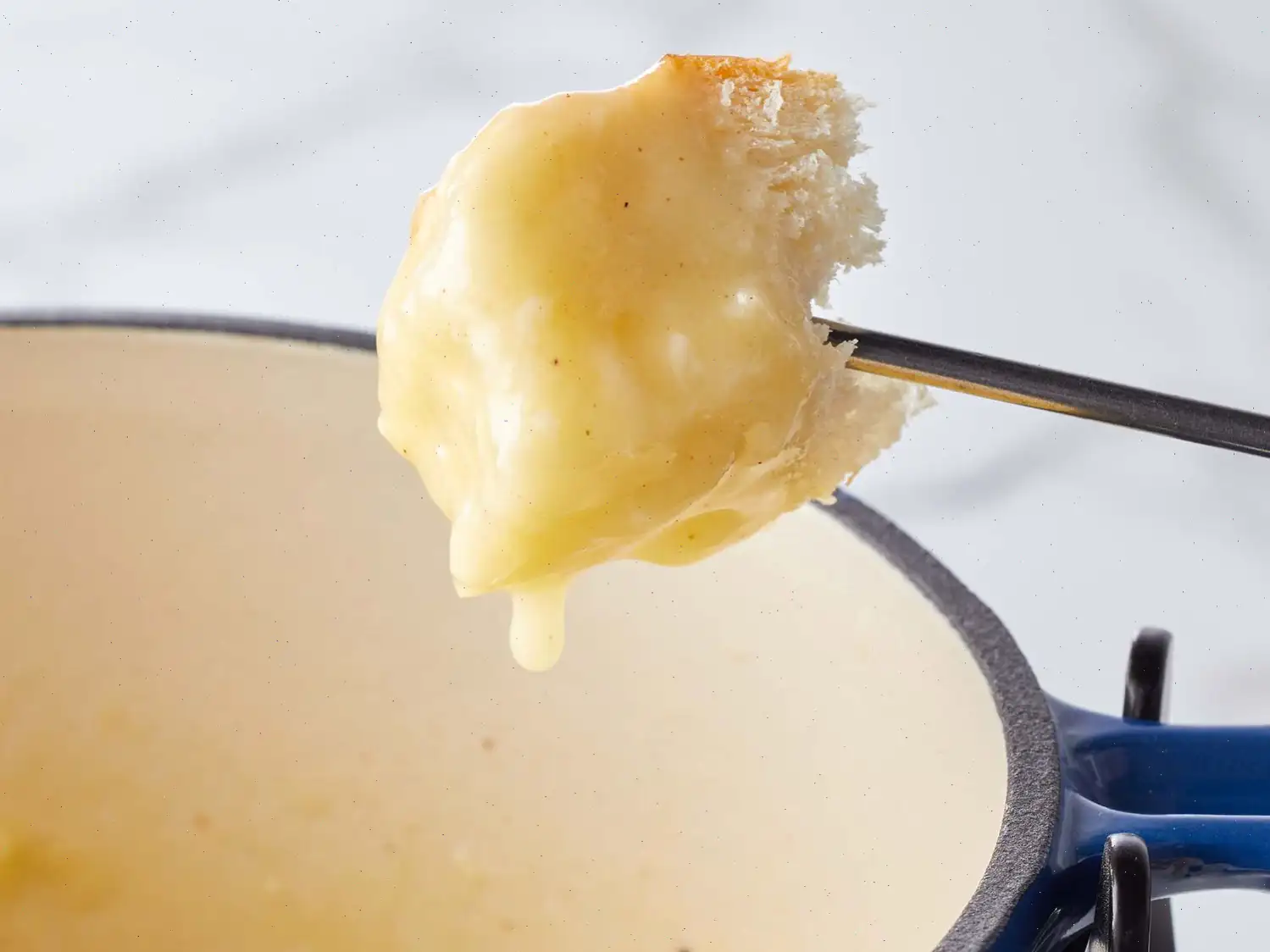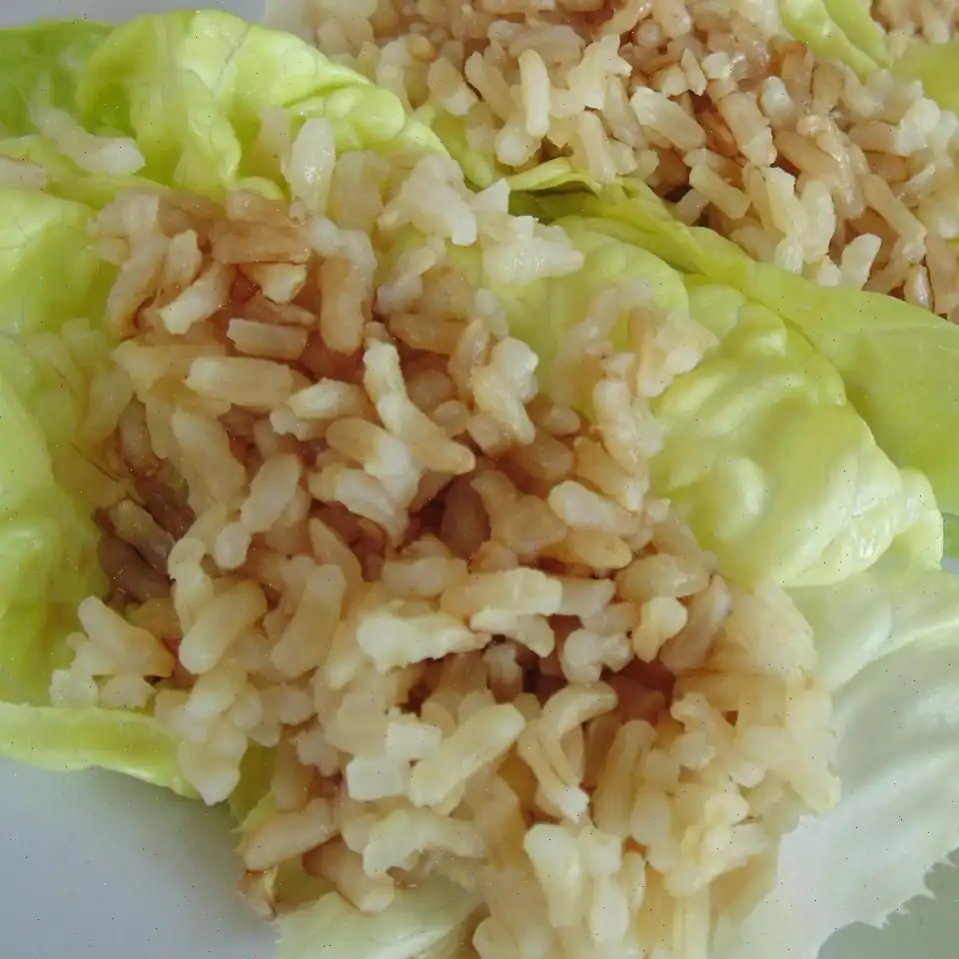
Easter Egg Rolls Recipe
Ingredients
- 1 tablespoon vegetable oil
- 1 tablespoon minced or finely grated fresh ginger
- 3 cloves garlic, minced
- 1 cup julienne (matchstick-cut) or shredded carrot
- 4 cups thinly sliced green cabbage
- 1/3 cup thinly sliced green onions
- 1/2 cup thinly sliced large brown button mushrooms
- 1/2 teaspoon kosher salt
- 2 teaspoons sesame oil
- 2 tablespoons oyster sauce
- 2 ounces dry rice vermicelli noodles
- 1/2 cup frozen green peas, thawed, well drained
- 6 ounces deli ham, cut into thin strips
- 1/4 teaspoon cayenne pepper
- 1/4 teaspoon freshly ground black pepper
- 14 large (6 to 7-inch) square egg roll wrappers
- 1 large egg, beaten with 1 teaspoon water for egg wash
- 2 cups high smoke point vegetable oil for frying, or as needed
- Mustard Sauce (optional):
- 3/4 cup yellow or Dijon mustard
- 1/4 cup seasoned rice vinegar
- 1 tablespoon Sriracha hot sauce, or to taste
Directions
- Heat 1 tablespoon vegetable oil over medium-high heat. Add garlic and ginger, stir-fry for about 30 seconds until fragrant but not browned.
- Add carrot, cabbage, green onions, mushrooms, and salt to the pan. Stir frequently for a few minutes until vegetables soften slightly.
- Stir in sesame oil and oyster sauce. Cook for an additional minute, then reduce heat to medium-low.
- Add uncooked vermicelli noodles to the pan. Using tongs, toss the noodles with the hot vegetable mixture, allowing the noodles to loosen and separate.
- Transfer the mixture to a bowl and let it cool. Once cooled, stir in peas, ham, cayenne, and black pepper. Taste and adjust seasoning if needed.
- Cover the bowl and refrigerate until the filling is ready to be used.
- To assemble the egg rolls, place an egg roll wrapper on a clean surface, positioning it in a diamond shape. Brush all four edges with egg wash.
- Spoon about 1/3 cup of filling onto the bottom third of the wrapper, ensuring it is centered and evenly spread.
- Fold the bottom tip of the wrapper over the filling, rolling it once to enclose the mixture. Fold in the sides, ensuring they are aligned and the filling is covered. Continue rolling until the egg roll is fully enclosed with the seam at the bottom.
- Repeat the process with the remaining wrappers and filling.
- Heat oil in a deep fryer or large saucepan to 350F (175C). Fry the egg rolls for 4 to 5 minutes, or until golden brown and crispy.
- Transfer egg rolls to a paper towel-lined plate to drain. Allow them to rest for a minute or two before serving.
- In a small bowl, whisk together mustard, rice vinegar, and Sriracha to taste. Serve alongside the egg rolls as a dipping sauce.
Optional: Mustard Sauce
Chef's Notes
If shallow frying, I like to turn the egg rolls every minute or so to ensure even browning.
For a quicker prep, you can use a store-bought coleslaw mix instead of shredding cabbage and carrots.
If you prefer a crunchier texture in your egg rolls, cut the vegetables into larger matchsticks and cook them less in the pan.
Nutrition Facts (per serving)
| Calories | 11g Fat | 23g Carbs | 9g Protein |
|---|---|---|---|
| 222 | 11g | 23g | 9g |
| Nutrition Summary | |||
| Calories | 222 | Total Fat | 11g (14%) |
| Saturated Fat | 2g (8%) | Cholesterol | 29mg (10%) |
| Sodium | 997mg (43%) | Total Carbs | 23g (8%) |
| Dietary Fiber | 4g (14%) | Total Sugars | 3g |
| Protein | 9g (18%) | Vitamin C | 22mg (24%) |
| Calcium | 68mg (5%) | Iron | 2mg (9%) |
| Potassium | 368mg (8%) | ||
Origin and History: Easter Egg Rolls combine the classic Asian technique of making egg rolls with the ingredients commonly found in a traditional Easter meal, such as leftover ham. The idea of "Easter Egg Rolls" as a concept is relatively modern, emerging as a fun way to incorporate leftover holiday food into a dish that celebrates both the holiday and Asian culinary traditions. The dish was popularized by chefs who wanted to experiment with using Easter leftovers in an Asian-inspired format, thus bridging cultural and culinary boundaries in a unique way.
Regional Variations: While egg rolls are typically a staple of Chinese cuisine, the Easter Egg Roll is a Western variation that is influenced by holiday traditions. In the United States, where Easter celebrations often involve ham and other savory meats, using these leftovers to create a new twist on the classic egg roll has become a beloved tradition in many households. This dish is not common in Asia, but the blend of familiar ingredients with a new preparation method reflects the global nature of modern cooking, where traditional recipes often evolve in unexpected ways.
How It Differs From Similar Dishes: Unlike traditional Chinese egg rolls, which are often filled with a variety of vegetables, pork, or shrimp, Easter Egg Rolls feature a combination of savory holiday ingredients such as ham, cabbage, mushrooms, and even rice vermicelli. This twist makes them distinct from classic spring rolls or egg rolls that usually emphasize fresh herbs, lean meats, and vegetables. Additionally, the use of a mustard-based dipping sauce is a unique feature, adding an extra layer of flavor that sets it apart from the usual soy sauce-based accompaniments.
Where They Are Typically Served: Easter Egg Rolls are generally served as an appetizer or snack, particularly during Easter gatherings, family meals, or potlucks. They can also be enjoyed as a light dinner or a savory side dish, making them perfect for informal gatherings or holiday brunches. The versatility of the dish means that it can be served both in casual home settings and at more festive occasions, offering a great way to creatively use leftovers from an Easter feast.
Interesting Facts: The concept of using leftover ham in a new and inventive way isn't just limited to Easter Egg Rolls. Many cultures have variations of using "leftover" meat to create new dishes, such as sandwiches, pies, or soups. The egg roll, in particular, has become a global dish, adapted in various forms around the world, from the United States to the Philippines to South Korea. The Easter Egg Roll is a perfect example of how traditional dishes can evolve based on available ingredients and cultural fusion.
So next time youre looking for a creative way to use up your Easter ham, consider making these Easter Egg Rolls. Whether you're hosting a holiday dinner or simply looking for a fun way to explore new flavors, this dish is sure to be a hit with family and friends.
You can listen to this recipe in AI audio format. Simply click the play button below to listen to the content in a format that suits you best. It’s a great way to absorb information on the go!
FAQ about Easter Egg Rolls Recipe
Comments
Joyce Hill
10/15/2024 06:24:54 PM
I followed the recipe using all the specified ingredients, and preparing the vegetables was a very calming experience. However, breaking the super thin rice vermicelli into smaller pieces turned out to be quite a challenge, unlike what Chef John made look easy - it was almost comical with tiny pieces flying around like hair! I had to clean up afterwards with a vacuum. Wrapping the egg rolls was enjoyable, and I generously filled them with heaping 1/3 cupfuls of the mixture. If you try to save on filling, you'll end up with too much crispy dough! I managed to make exactly 12 egg rolls, luckily having purchased 2 packs of roll papers with 6 in each pack. This was my first time making egg rolls, and I absolutely loved this recipe! It's straightforward but requires some preparation time...after frying for just 4 minutes, the result was amazing!
Nathan Adams
12/12/2023 03:11:08 PM
The video was amazing! It was easy to follow, and my egg rolls turned out fantastic.
William Moore
08/23/2024 07:20:32 AM
We absolutely adored this dish. I took a lazy approach by simply grating the carrots, but surprisingly, it turned out wonderfully. The dipping sauce was a breeze to make, and the mustard paired perfectly with the ham. I'm considering trying a version with corned beef next time to indulge my inner Chinese-Irish-American fusion cravings.



